Radiation therapy is a common treatment for many cancers, but it can sometimes lead to delayed radiation injuries. These injuries can happen weeks, months, or even years after treatment, causing significant tissue damage, pain, and difficulty in daily activities.
Fortunately, Hyperbaric Oxygen Therapy (HBOT) is becoming a helpful option for managing these injuries, aiding healing, and improving quality of life.
This blog is going to cover how HBOT can help you recover from delayed radiation injuries, its method, and much more! Stick around until the end to get all your queries cleared!
Understanding Delayed Radiation Injury
Delayed radiation injuries can affect various tissues and organs based on the area treated. Common areas include skin, soft tissues, and bones. Symptoms can include:
- Skin Changes: Redness, sores, or thickened tissue.
- Pain and Discomfort: Ongoing pain in the treated area, making daily activities tough.
- Impaired Function: Reduced movement, especially in joints or limbs.
- Fatigue: Many patients report feeling tired all the time, which affects overall well-being.
These injuries can greatly impact a patient’s life and often require a comprehensive approach to treatment.
What is Hyperbaric Oxygen Therapy (HBOT)?
HBOT involves breathing pure oxygen in a pressurized chamber. This environment allows the lungs to absorb more oxygen than under normal conditions. Increased oxygen levels in the blood help deliver more oxygen to tissues, promoting healing and recovery.
HBOT is recognized for supporting healing in various medical issues, including delayed radiation injuries. It triggers important biological processes vital for tissue repair and regeneration.
How HBOT Works for Delayed Radiation Injuries
Take a look at these factors to understand how Hyperbaric Oxygen Therapy works for delayed radiation injuries:
Enhanced Oxygenation
One main benefit of HBOT is improving oxygen supply to damaged tissues. Radiation can create areas that lack oxygen, slowing healing. By providing high levels of oxygen, HBOT helps restore normal cell function.
Reduction of Inflammation
Delayed radiation injuries often lead to inflammation, making tissue damage worse. HBOT has anti-inflammatory effects that help reduce swelling and promote recovery.
Promotion of New Blood Vessel Formation
HBOT stimulates the creation of new blood vessels in damaged tissues. Improved blood flow enhances nutrient and oxygen delivery, further aiding healing.
Collagen Formation
Radiation can disrupt collagen production, leading to weak tissue. HBOT promotes collagen synthesis, which is key for tissue strength and integrity.
Neuroprotection
In cases where radiation affects nerves, HBOT may provide benefits that help restore function and reduce pain.
Benefits of HBOT for Radiation Injuries
Check out the benefits of getting Hyperbaric Oxygen Therepy for Radiation Injuries:
Pain Relief
Many patients report significant pain relief after HBOT for delayed radiation injuries. Reduced inflammation and better oxygenation can ease discomfort.
Enhanced Healing
HBOT often leads to faster and more effective healing of radiation-induced injuries, helping patients regain function and improve quality of life.
Improved Quality of Life
By addressing physical and emotional challenges, HBOT contributes to a better overall quality of life for patients.
Reduction of Scarring
HBOT can help minimize scarring in affected areas, improving appearance and boosting self-esteem.
Support for Chronic Conditions
Patients with existing health issues or chronic pain may find added relief and improved management of their overall health after undergoing HBOT.
How Long Do the Effects of Hyperbaric Oxygen Therapy Last?
A common question about HBOT is how long its effects last. The duration of benefits can vary based on several factors, including:
Severity of Injury
More severe injuries may need more sessions and take longer to heal.
Overall Health
Healthier patients may experience quicker and more lasting results.
Treatment Protocol
The number and frequency of HBOT sessions can influence outcomes.
Many patients notice improvements shortly after starting HBOT, with benefits lasting weeks to months afterward. Some may need ongoing sessions to maintain results, especially if dealing with chronic radiation damage.
How to Heal Radiation Damage
Healing radiation damage is a multi-step process. Here are some strategies that can work alongside HBOT in managing delayed radiation injuries:
Medical Care
Work with healthcare professionals to create a treatment plan. This might include medications for pain, topical treatments for skin issues, and physical therapy for function. You should stay highly motivated for your health and do not lose hope.
Nutritional Support
Eating a balanced diet rich in vitamins and minerals can aid healing. Nutrients like vitamin C, vitamin E, and zinc are important for tissue repair. Your diet contributes a lot to supporting a stronger immune system.
Physical Rehabilitation
Physical therapy can help restore movement and function. Tailored exercise programs can improve strength, flexibility, and overall well-being. Must contact a professional physiotherapist for this purpose, otherwise you might end up hurting yourself.
Emotional Support
The psychological impact of delayed radiation injuries can be significant. Counseling, support groups, and hobbies can provide emotional relief and improve quality of life. It is also good to talk to people who are suffering from the same injuries as you.
Lifestyle Changes
Avoiding smoking, limiting alcohol, and managing stress can enhance overall health and support healing.
Research and Evidence Supporting HBOT
Numerous studies have shown HBOT’s effectiveness for treating delayed radiation injuries. Research indicates that patients undergoing HBOT experience significant improvements in wound healing, pain reduction, and tissue regeneration.
This evidence supports including HBOT in treatment plans for patients dealing with these injuries.
Future Directions in HBOT Research
As interest in HBOT grows, research continues to explore its benefits and applications. Future studies aim to refine treatment protocols, identify which patients benefit most, and investigate long-term outcomes.
As more data becomes available, HBOT could become a standard treatment option for managing delayed radiation injuries.
Conclusion
Delayed radiation injuries can greatly impact a patient’s life, but Hyperbaric Oxygen Therapy offers a powerful tool for healing. By improving oxygen delivery, reducing inflammation, and promoting tissue repair, HBOT gives hope to patients dealing with the effects of radiation therapy.
If you or someone you know is facing delayed radiation injuries, consider discussing the potential benefits of HBOT with a professional HBOT center. With ongoing research and advancements in treatment options, HBOT may become a key part of managing and healing radiation damage, helping patients regain their lives and improve overall well-being.
Read More: Struggling with Non-Healing Foot Wounds? Discover How HBOT Can Help Diabetics!
Read More: HBOT Treatment for Long COVID: A Potential Solution for Recovery
Read More: The Role of HBOT in Speeding Up Stroke Recovery
Read More: Using Hyperbaric Oxygen Therapy to Treat Delayed Radiation Injuries
Read More: How HBOT for Viral Infections Helps in Recovery?
Read More: HBOT for Depression: The Impact of HBOT on Mental Health
Read More: HBOT for Cancer Patients: A Supportive Therapy for Cancer
Read More: Using HBOT for Autism Spectrum Disorder




